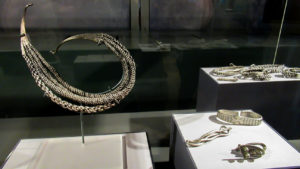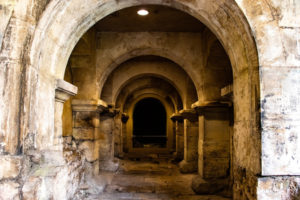Wistman’s Wood has been mentioned in writing for hundreds of years. It is likely to be a left-over from the ancient forest that covered much of Dartmoor c. 7000 BC before Mesolithic hunter/gatherers cleared it around 5000 BC. Photographic and other records show that Wistman’s Wood has changed considerably since the mid-19th century; at the same time climatic conditions have also generally become warmer. Over this period, the older oak trees have grown from a stunted/semi-prostrate to a more ascending form, while a new generation of mostly straight-grown and single-stemmed oaks has developed. The oldest oaks appear to be 400–500 years old and originated within a degenerating oakwood that survived in scrub form during two centuries of cold climate. In c. 1620 these old trees were described as “no taller than a man may touch to top with his head”. Tree height increased somewhat by the mid-19th century, and during the 20th century approximately doubled (in 1997 the maximum and the average height of trees was around 12 m and 7 m respectively). In addition, a wave of marginal new oaks arose after c. 1900, roughly doubling the area of wood. Part of the evidence for these changes comes from a permanent vegetation plot located in the southern end of South Wood.
Myths, art, and literature
The wood has been the inspiration for numerous artists, poets, photographers, and appears in hundreds of nineteenth-century accounts. One tradition holds that it was planted by Isabella de Fortibus (1237-93).
The wood is described in detail and discussed as a point of great interest in The Tree, a 1978 essay on naturalism by English novelist John Fowles.
The name of Wistman’s Wood may derive from the dialect word “wisht”, meaning “eerie/uncanny” or “pixie-led/haunted”. The legendary Wild Hunt in Devon, whose hellhounds are known as Yeth (Heath) or Wisht Hounds in the Devonshire dialect, is particularly associated with Wistman’s Wood.







